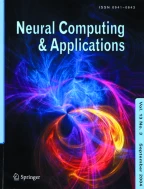Abstract
Accurate and timely investigation to concentrate grade and recovery is a premise of realizing automation control in a froth flotation process. This study seeks to use deep learning technologies modeling a manufacturing flotation process, forecasting the concentrate purities for iron and the waste silica. Considering the size and temporality of engineering data, we adopted a long short-term memory to form the core part of the deep learning model. To perform this process, 23 variables reflecting a flotation plant were monitored and collected hourly over a half year time span, then wrangled, split, and restructured for deep learning model use. A deep learning model encompassing a stacked long short-term memory architecture was designed, trained, and tested with prepared data. The model’s performance on test data demonstrates the capability of our proposed model to predict real-time concentrate purities for iron and silica. Compared with a traditional machine model typified by a random forest model in this study, the proposed deep learning model is significantly more competent to model a manufacturing froth flotation process. Expected to lay a foundation for realizing automation control of the flotation process, this study should encourage deep learning in mineral processing engineering.
Similar content being viewed by others
Explore related subjects
Discover the latest articles, news and stories from top researchers in related subjects.References
Jahedsaravani A et al (2016) Froth-based modeling and control of a batch flotation process. Int J Miner Process 146:90–96
Wills BA, Finch J (2015) Wills’ mineral processing technology: an introduction to the practical aspects of ore treatment and mineral recovery. Butterworth-Heinemann, Oxford
Nakhaei F et al (2012) Recovery and grade accurate prediction of pilot plant flotation column concentrate: neural network and statistical techniques. Int J Miner Process 110:140–154
Vieira S, Sousa J, Durão F (2005) Fuzzy modelling strategies applied to a column flotation process. Miner Eng 18(7):725–729
McCoy J, Auret L (2019) Machine learning applications in minerals processing: a review. Miner Eng 132:95–109
Miriyala SS, Mitra K (2019) Multi-objective optimization of iron ore induration process using optimal neural networks. Mater Manuf Process. https://doi.org/10.1080/10426914.2019.1643476
Miriyala SS, Subramanian VR, Mitra K (2018) TRANSFORM-ANN for online optimization of complex industrial processes: casting process as case study. Eur J Oper Res 264(1):294–309
Mitra K, Ghivari M (2006) Modeling of an industrial wet grinding operation using data-driven techniques. Comput Chem Eng 30(3):508–520
Chelgani SC, Shahbazi B, Rezai B (2010) Estimation of froth flotation recovery and collision probability based on operational parameters using an artificial neural network. Int J Miner Metall Mater 17(5):526–534
Yang C et al (2011) Soft sensor of key index for flotation process based on sparse multiple kernels least squares support vector machines. Chin J Nonferr Met 21(12):3149–3154
Kaijun, Z., et al., Flotation recovery prediction based on froth features and LS-SVM [J]. Chinese Journal of Scientific Instrument, 2009. 6
Chelgani SC, Shahbazi B, Hadavandi E (2018) Support vector regression modeling of coal flotation based on variable importance measurements by mutual information method. Measurement 114:102–108
Shahbazi B, Chelgani SC, Matin S (2017) Prediction of froth flotation responses based on various conditioning parameters by random forest method. Colloids Surf A 529:936–941
LeCun Y, Bengio Y, Hinton G (2015) Deep learning. Nature 521(7553):436
Miriyala SS, Mitra K (2020) Deep learning based system identification of industrial integrated grinding circuits. Powder Technol 360:921–936
Filippov L, Severov V, Filippova I (2014) An overview of the beneficiation of iron ores via reverse cationic flotation. Int J Miner Process 127:62–69
Elman JL (1990) Finding structure in time. Cogn Sci 14(2):179–211
Gers FA, Schmidhuber J, Cummins F (1999) Learning to forget: continual prediction with LSTM. pp 850–855
Cybenko G (1989) Approximations by superpositions of a sigmoidal function. Math Control Signals Syst 2:183–192
Pascanu R et al (2013) How to construct deep recurrent neural networks. arXiv preprint arXiv:1312.6026
Kingma DP, Ba J (2014) Adam: A method for stochastic optimization. arXiv preprint arXiv:1412.6980
Hua J et al (2004) Optimal number of features as a function of sample size for various classification rules. Bioinformatics 21(8):1509–1515
Liaw A, Wiener M (2002) Classification and regression by random forest. R News 2(3):18–22
Acknowledgements
This study was supported by the Natural Sciences and Engineering Research Council of Canada (NSERC) under Collaborative Research and Development (CRD) Grant (NSERC RGPIN-2019-04572). And also, supports from Chinese Scholarship Council were gratefully acknowledged.
Author information
Authors and Affiliations
Corresponding authors
Ethics declarations
Conflict of interest
There are no conflicts of interest to disclosure.
Additional information
Publisher's Note
Springer Nature remains neutral with regard to jurisdictional claims in published maps and institutional affiliations.
Rights and permissions
About this article
Cite this article
Pu, Y., Szmigiel, A. & Apel, D.B. Purities prediction in a manufacturing froth flotation plant: the deep learning techniques. Neural Comput & Applic 32, 13639–13649 (2020). https://doi.org/10.1007/s00521-020-04773-2
Received:
Accepted:
Published:
Issue Date:
DOI: https://doi.org/10.1007/s00521-020-04773-2
